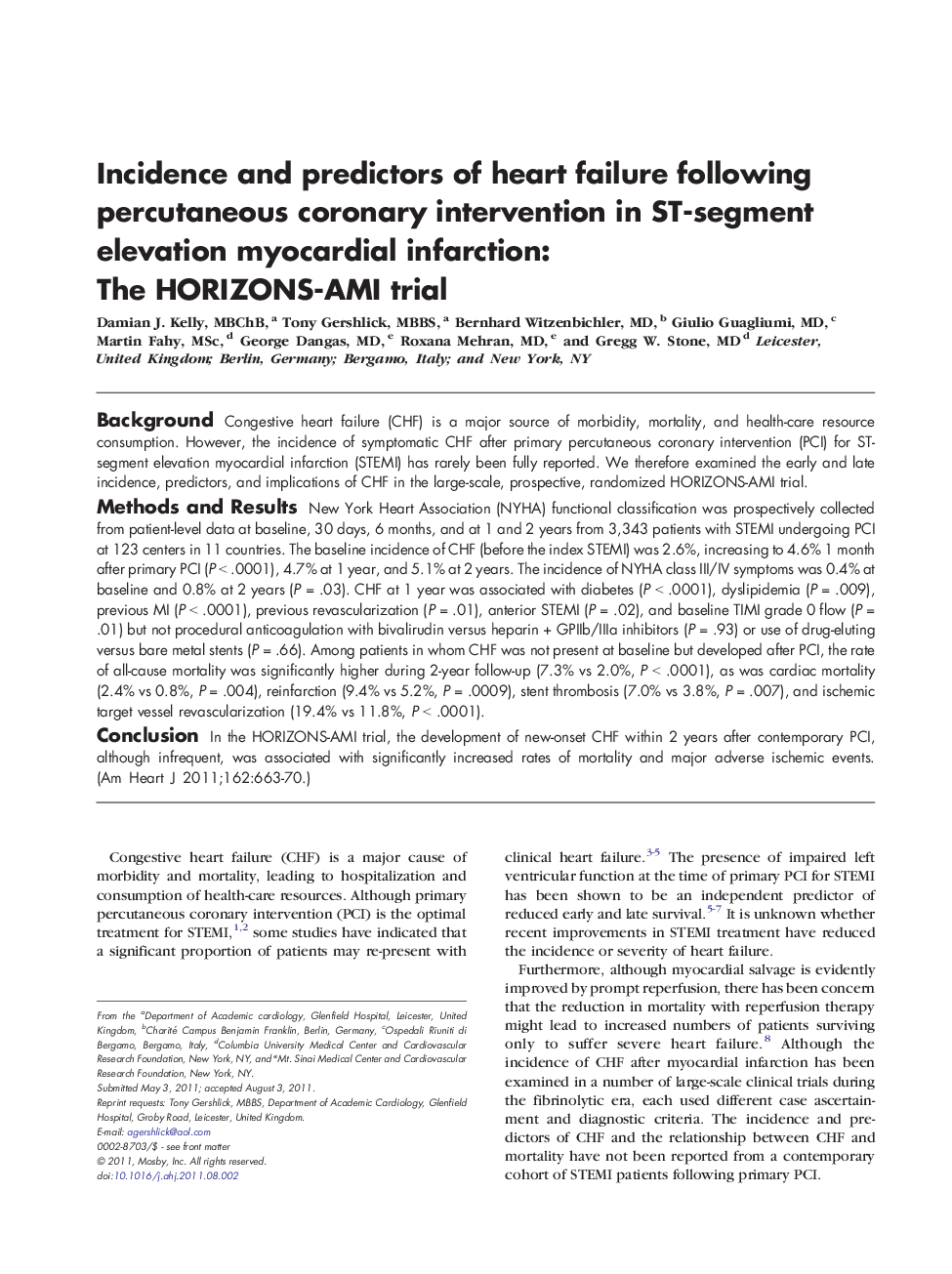| Article ID | Journal | Published Year | Pages | File Type |
|---|---|---|---|---|
| 2850233 | American Heart Journal | 2011 | 8 Pages |
BackgroundCongestive heart failure (CHF) is a major source of morbidity, mortality, and health-care resource consumption. However, the incidence of symptomatic CHF after primary percutaneous coronary intervention (PCI) for ST-segment elevation myocardial infarction (STEMI) has rarely been fully reported. We therefore examined the early and late incidence, predictors, and implications of CHF in the large-scale, prospective, randomized HORIZONS-AMI trial.Methods and ResultsNew York Heart Association (NYHA) functional classification was prospectively collected from patient-level data at baseline, 30 days, 6 months, and at 1 and 2 years from 3,343 patients with STEMI undergoing PCI at 123 centers in 11 countries. The baseline incidence of CHF (before the index STEMI) was 2.6%, increasing to 4.6% 1 month after primary PCI (P < .0001), 4.7% at 1 year, and 5.1% at 2 years. The incidence of NYHA class III/IV symptoms was 0.4% at baseline and 0.8% at 2 years (P = .03). CHF at 1 year was associated with diabetes (P < .0001), dyslipidemia (P = .009), previous MI (P < .0001), previous revascularization (P = .01), anterior STEMI (P = .02), and baseline TIMI grade 0 flow (P = .01) but not procedural anticoagulation with bivalirudin versus heparin + GPIIb/IIIa inhibitors (P = .93) or use of drug-eluting versus bare metal stents (P = .66). Among patients in whom CHF was not present at baseline but developed after PCI, the rate of all-cause mortality was significantly higher during 2-year follow-up (7.3% vs 2.0%, P < .0001), as was cardiac mortality (2.4% vs 0.8%, P = .004), reinfarction (9.4% vs 5.2%, P = .0009), stent thrombosis (7.0% vs 3.8%, P = .007), and ischemic target vessel revascularization (19.4% vs 11.8%, P < .0001).ConclusionIn the HORIZONS-AMI trial, the development of new-onset CHF within 2 years after contemporary PCI, although infrequent, was associated with significantly increased rates of mortality and major adverse ischemic events.
